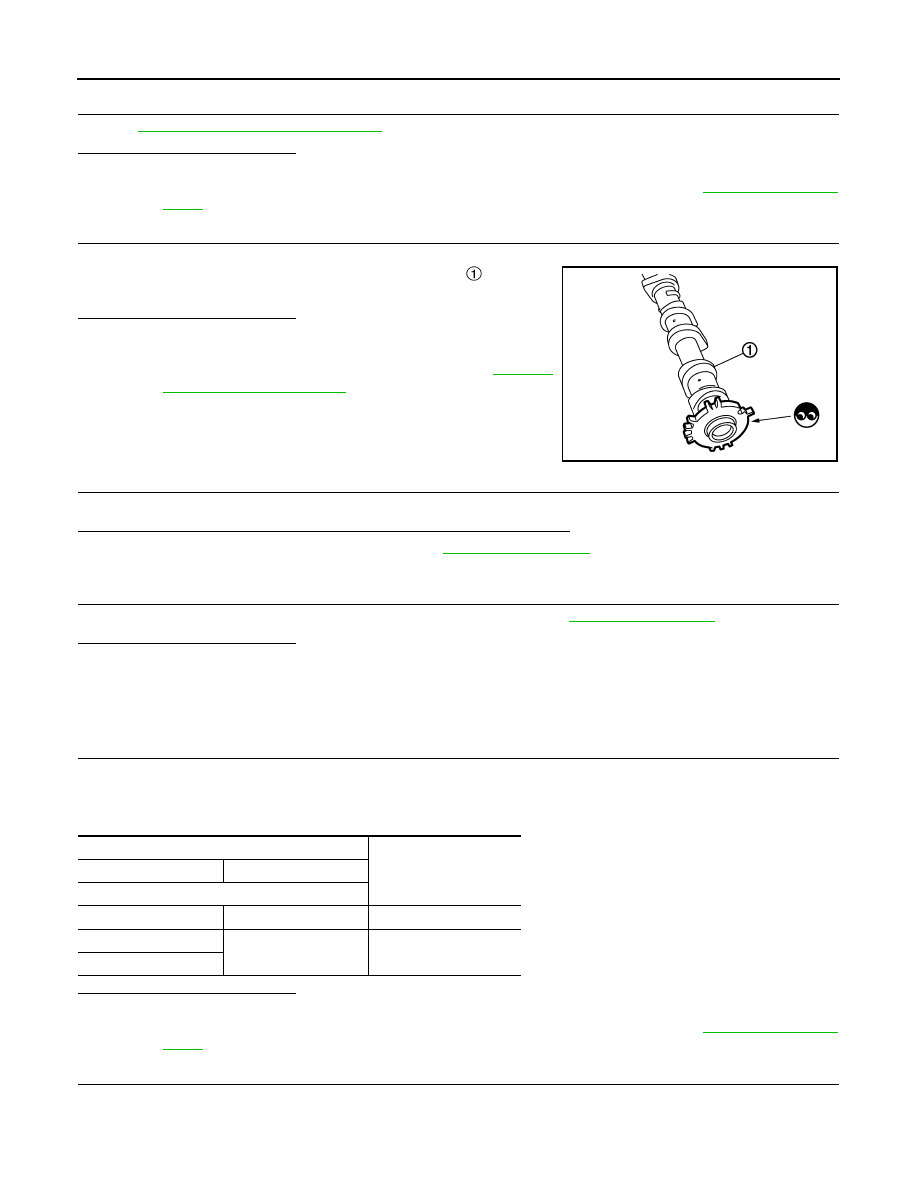Qashqai J11. Engine control system (MR20DD) - part 11

ECM-162
< DTC/CIRCUIT DIAGNOSIS >
[MR20DD]
P0014 EVT CONTROL
5.
CHECK EXHAUST VALVE TIMING CONTROL POSITION SENSOR
ECM-162, "Component Inspection"
Is the inspection result normal?
YES
>> GO TO 6.
NO
>> Replace malfunctioning exhaust valve timing control position sensor. Refer to
6.
CHECK CAMSHAFT (EXH)
Check the following.
• Accumulation of debris to the signal plate of camshaft
rear end
• Chipping signal plate of camshaft front end
Is the inspection result normal?
YES
>> GO TO 7.
NO
>> Remove debris and clean the signal plate of camshaft
front end or replace camshaft. Refer to
.
7.
CHECK TIMING CHAIN INSTALLATION
Check service records for any recent repairs that may cause timing chain misaligned.
Are there any service records that may cause timing chain misaligned?
YES
>> Check timing chain installation. Refer to
NO
>> GO TO 8.
8.
CHECK LUBRICATION CIRCUIT
Perform “Inspection of Camshaft Sprocket (EXT) Oil Groove”. Refer to
Is the inspection result normal?
YES
>> INSPECTION END
NO
>> Clean lubrication line.
Component Inspection
INFOID:0000000010702890
1.
CHECK EXHAUST VALVE TIMING CONTROL SOLENOID VALVE-1
1.
Turn ignition switch OFF.
2.
Disconnect exhaust valve timing control solenoid valve harness connector.
3.
Check resistance between exhaust valve timing control solenoid valve terminals as per the following.
Is the inspection result normal?
YES
>> GO TO 2.
NO
>> Replace malfunctioning exhaust valve timing control solenoid valve. Refer to
2.
CHECK EXHAUST VALVE TIMING CONTROL SOLENOID VALVE-2
1.
Remove exhaust valve timing control solenoid valve.
PBIA9557J
Exhaust valve timing control solenoid valve
Resistance
+
−
Terminal
1
2
6.7 -7.7
Ω
(at 20
°
C)
1
Ground
Not exist
2